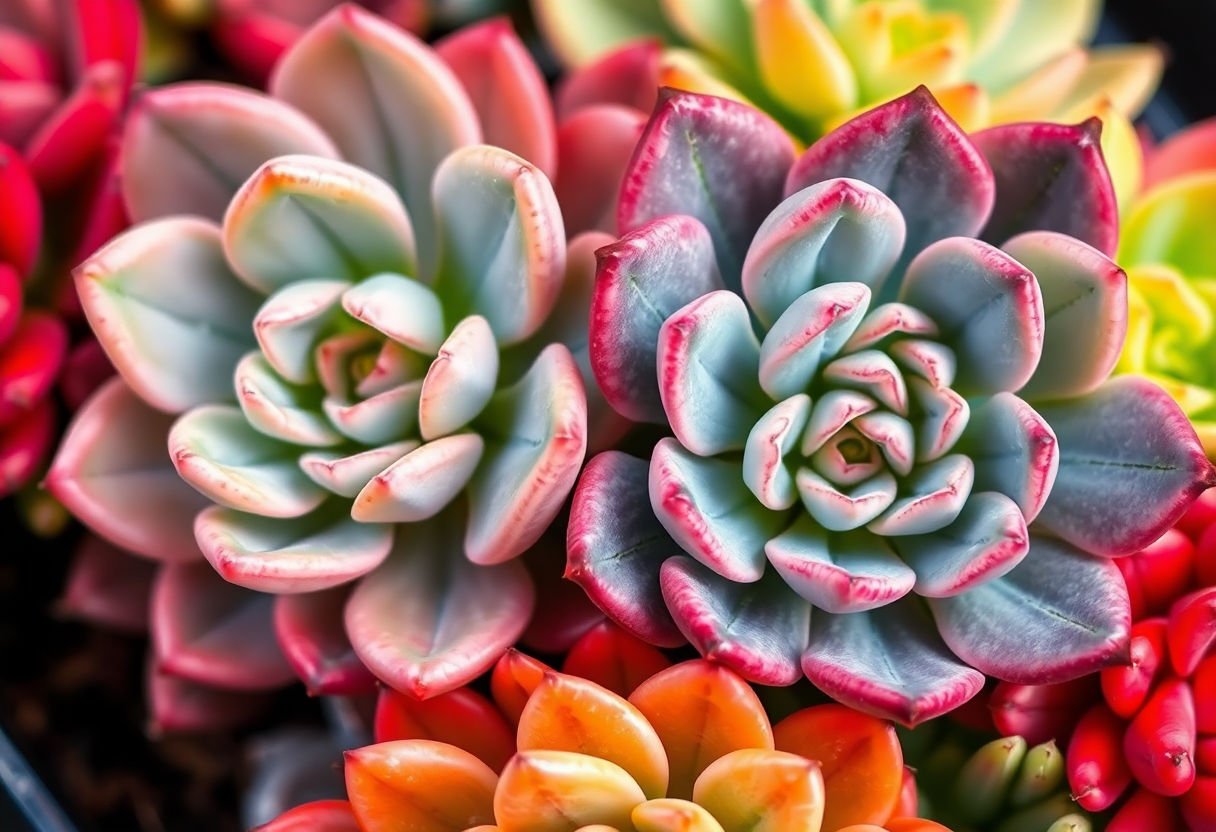In the world of plants, succulents stand out with their unique ability to store water and thrive in dry places. Yet, when a succulent blooms, it becomes even more special. This article explores why and how these plants flower. We will look at key factors like light, temperature, and water. You’ll learn about the biological steps that lead to blooming. We will talk about common challenges and how to handle them, seasonal care tips, and even the best varieties for blooms. By the end, you will gain practical knowledge to help your succulents thrive.
Key Takeaways
- Light, temperature, and water are key to helping succulents bloom.
- Understanding succulents’ needs helps in providing the right environment for flowering.
- Proper care techniques include managing soil, light, and other conditions.
- Propagation methods can enhance blooms and encourage new growth.
Understanding Succulents and Their Unique Characteristics
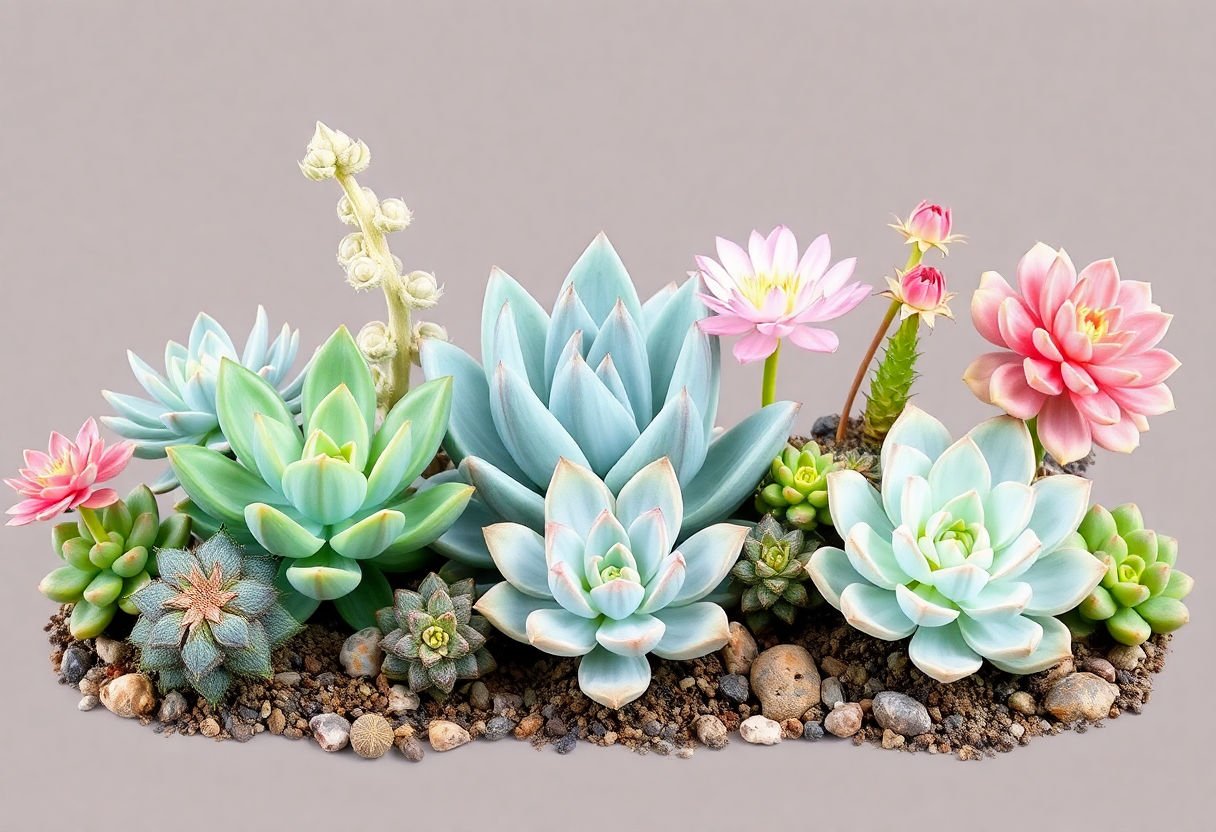
Succulents are more than ordinary plants. They thrive beautifully in dry areas. Yet, these plants offer much more. Their unique traits set them apart from other plants.
Water Storage
Succulents can store water in their thick leaves, stems, or roots. This ability helps them survive in places with little rainfall. Picture a sponge soaking up water. That’s how their leaves act. This characteristic lets them live where other plants cannot.
Adaptation to Dry Places
Succulents can grow in deserts and areas with little water. They adjust to these harsh places by developing special features. Think of their waxy leaves. This wax lessens water loss, much like a raincoat repels water.
Diverse Appearance
These plants come in many shapes and colors. Some have pointy leaves. Others have round ones. Some are dark green, while others show bright reds, purples, or blues. This diversity makes them popular with plant lovers.
Photosynthesis
Most plants use sunlight the same way during the day. Succulents handle it differently. They open their pores at night to take in carbon dioxide and store it. During the day, they use this stored gas to make food.
Unique Growth Patterns
Succulents tend to grow slowly and remain small. This trait helps them use resources wisely. Even their roots adapt by spreading out to catch water better.
Succulents teach a lot. Their special ways of living make them fascinating. They remind everyone that life finds ways to flourish, even in tough spaces.
Factors Influencing Succulent Blooming
Blooming in succulents depends on several key factors. Light plays a big role. Succulents need bright light to flourish. If sunlight is too low, they won’t bloom well. But too much direct sun can burn them. Aim for a few hours of morning sun to keep them happy.
Temperature is another piece of the puzzle. Most succulents like warm days and cooler nights. Think about desert climates—hot but chillier when the sun goes down. Try to replicate that at home for the best results.
Proper watering is crucial. Succulents need a careful balance. Too much water can rot roots. Too little can dry them out. Check if the soil is dry before watering again. This simple step prevents overwatering.
Pay attention to the growing season of your succulents. Some bloom in spring, others in fall. Understanding your plant’s natural cycle helps. Around blooming time, make sure conditions are just right.
Let’s not forget about fertilizer. A little boost with the right nutrients makes a difference. Use a balanced, gentle fertilizer in the growing season. This aids their bloom process.
Soil matters too. Well-draining soil is essential. It helps water to flow, preventing root rot. Use cactus soil mix or add sand to regular potting soil.
Each of these factors works together. By managing them well, succulents can reward you with beautiful blooms. Remember, patience and observation are your best tools. Adjust conditions slowly and watch your plants thrive.
The Biological Process of Succulent Flowering
Succulent flowering begins when the plant gets signals from its surroundings. This happens through changes in light and temperature. When days are longer, succulents know it’s time to bloom.
Hormones play a big role. Hormones are special chemicals inside plants. They help control how the plant grows. One important hormone is called florigen. It tells the plant to start making flowers.
The growth cycle starts with photosynthesis. This process helps the succulent turn sunlight into energy. This energy then moves through the plant. It helps the plant grow bigger and stronger.
Eventually, tiny buds form. These are the beginnings of flowers. Buds turn into flowers through a process called differentiation. It means the plant changes in special ways to make flowers.
During this time, succulents may seem slow. That’s normal. They need time to bring resources to the buds. This way, the flowers have everything they need to open.
In hot and dry places, this cycle helps succulents survive. They wait until just the right moment to flower. This ensures that the plant saves resources when needed.
In summary, succulent flowering involves a series of steps. From environmental cues to hormone signals, each part plays a role. Understanding this process helps us appreciate the beauty and complexity of these unique plants.
Optimal Growing Conditions for Succulent Blooms
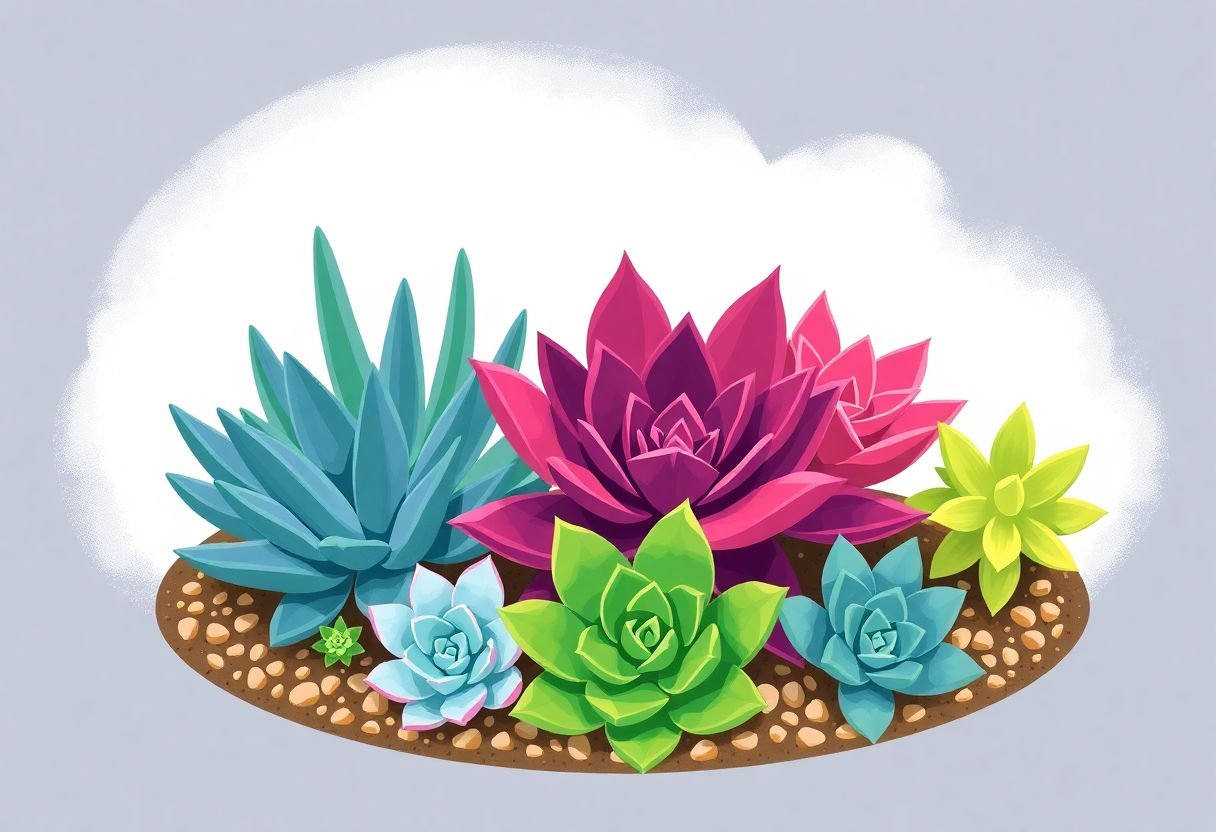
Succulents need the right conditions to bloom beautifully. Let’s explore what these are.
Light: Succulents love sunlight. They thrive under bright light. Place your succulents near a window that gets sun for about six hours a day. But be careful. Too much direct sunlight can harm them. It helps to provide indirect sunlight during the hottest parts of the day. This prevents scorching.
Temperature: Succulents like warm days and cooler nights. They prefer temperatures between 60°F and 80°F. During winter, keep them in a cooler spot but not below 40°F. Think of their natural desert home where days are warm and nights cool.
Watering: Proper watering is key. Overwatering can cause root rot. Let the soil dry out between waterings. Water deeply, then wait for the excess to drain away. Imagine a brief desert rain followed by dry days.
Soil: Use well-draining soil. A cactus mix works well. You can also mix sand or perlite with regular potting soil. This helps excess water escape, keeping roots from sitting in moisture.
Humidity: Succulents prefer low humidity. Too much moisture in the air can lead to problems. Keep the air around them dry. A fan can help circulate air if your room is humid.
In summary, light, temperature, watering, soil, and humidity must be just right. These conditions help your succulents bloom, showing off their vibrant colors and unique shapes.
Common Challenges and How to Overcome Them
Growing succulents can be quite rewarding, but it does come with its set of challenges. One common issue is pests. Pests like aphids or mealybugs love to feast on succulents. Check your plants often for these tiny invaders. If you find any, a simple spray of water mixed with a little dish soap can help keep them away.
Another challenge gardeners face is over-watering. Succulents do not need much water. Over-watering can lead to root rot, which is often deadly for these plants. To avoid this, let the soil dry out completely between waterings.
Sometimes, succulents may not bloom because of a lack of sunlight. Sunlight plays a big role in their growth and flowering. If your succulent is not blooming, try moving it to a spot where it can soak in more light. But be careful not to expose it to too much direct sun as it might burn the leaves.
Diseases can also affect succulents. Fungal diseases, for instance, thrive in moist conditions. If you see black spots or mushy areas on your plant, it might have a fungal infection. Make sure your succulents are not sitting in water, and improve air circulation around them.
Lastly, incorrect soil types can hinder blooming. Succulents need soil that drains well. If the soil holds too much water, roots can suffocate. You can use a special cactus or succulent mix to help with this. By tackling these challenges, you can enjoy healthy blooming succulents with ease.
Seasonal Considerations for Succulent Blooming
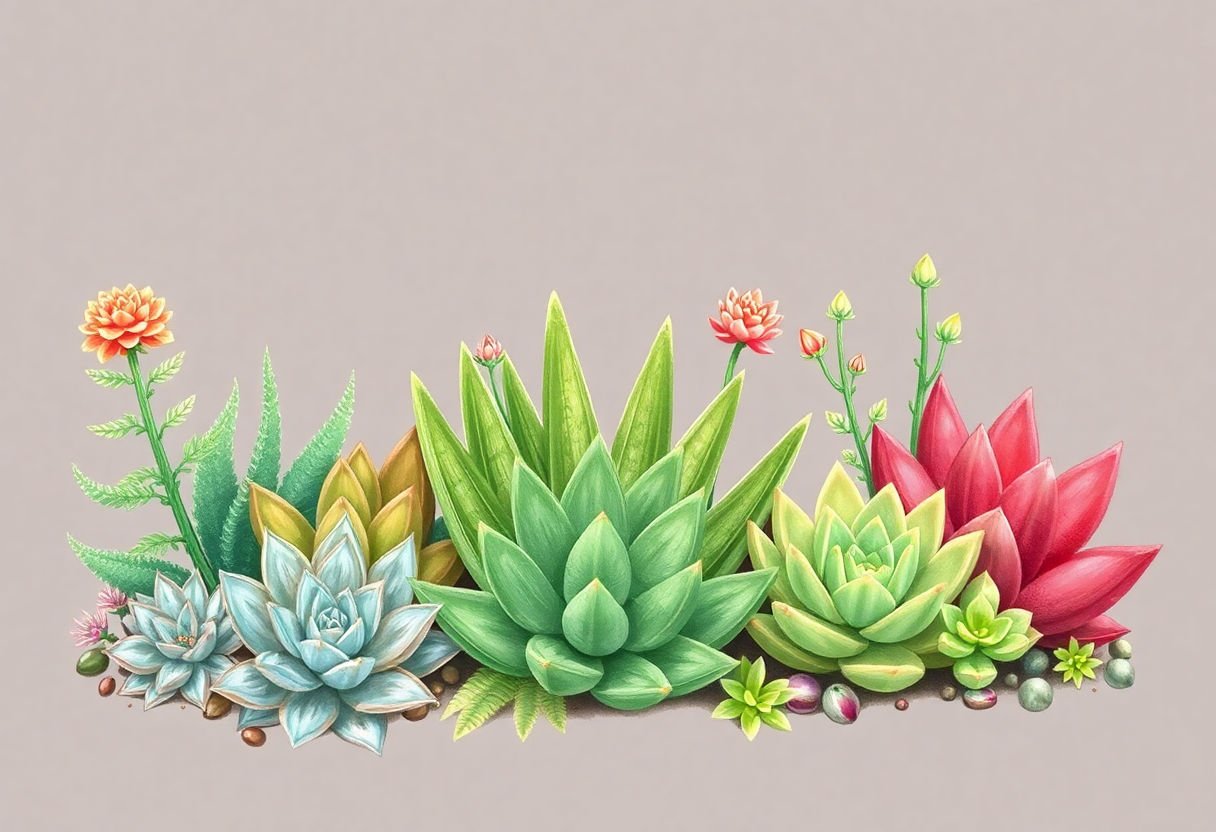
Succulent blooming changes with the seasons. Spring often kickstarts growth. The days get longer, and the sun shines brighter. During this time, water more. The soil should dry out a bit between watering. Think of a sponge. It gets wet, then dries slowly.
Summer can be tricky. The heat can be intense. Watering might need adjusting. But watch out for too much sun. Succulents can burn. It is like having too much sun exposure without sunscreen. Provide some shade if needed.
Fall brings cooler weather. Many succulents enjoy this. The days shorten, and temperatures drop. Reduce watering. Let the soil dry longer. It is a good time to clean up any dead leaves or flowers.
Winter requires even more care. Keep watering to a minimum. Think of succulents in a sleepy state. They rest in winter. If indoors, give them good light. A window with sunlight works. If outdoor increases cold protection. Frost can harm succulents.
Adapting care with the seasons helps succulents bloom better. Keep an eye on your plants. They tell you what they need. Working with nature helps your succulents thrive throughout the year.
Propagation Techniques for Blooming Succulents
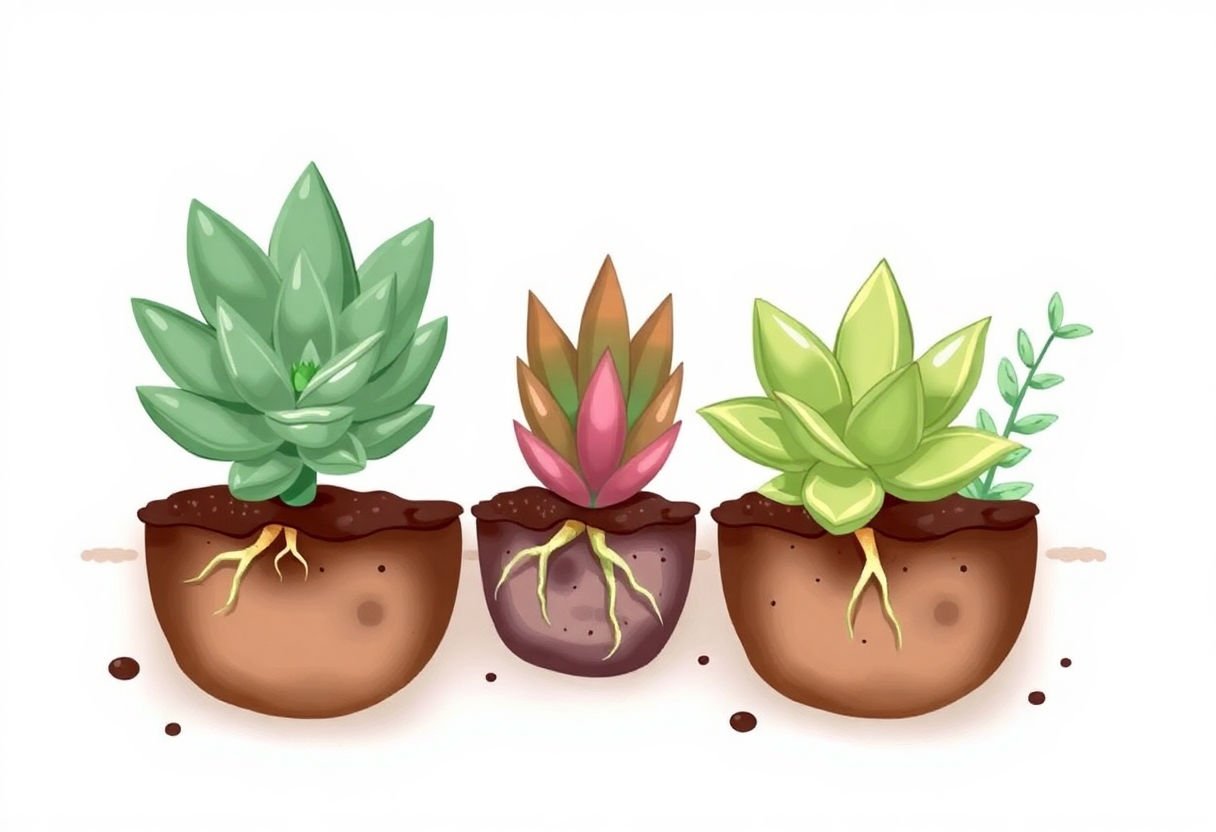
Propagating succulents lets you grow new plants from existing ones. This fun process can help more blooms appear. There are a few methods to start with.
Leaf Cuttings: Choose a healthy, firm leaf. Twist it gently from the stem with a clean break. Let the leaf dry for a day or two. Once the end has calloused, place it on well-draining soil. Mist the leaf every few days. Roots will form and soon a new plant will start growing.
Stem Cuttings: For some succulents, stem cuttings work well. Cut a healthy stem with several leaves attached. Let the cut end callous over for a few days. Plant the stem in soil, making sure at least an inch is buried. Water the soil lightly once roots form.
Offsets: Many succulents, like hens and chicks, produce baby plants. These little plants can be separated from the mother. Gently remove the baby plant and let it dry. Once calloused, plant it in a pot with the right soil mix.
Propagation gives your succulents more chances to bloom. A new plant from a leaf can show growth and sometimes bloom much faster than expected. Different methods work better with different succulent types. So, try them out and see which ones your plants prefer.
Succulent Varieties Known for Their Beautiful Blooms
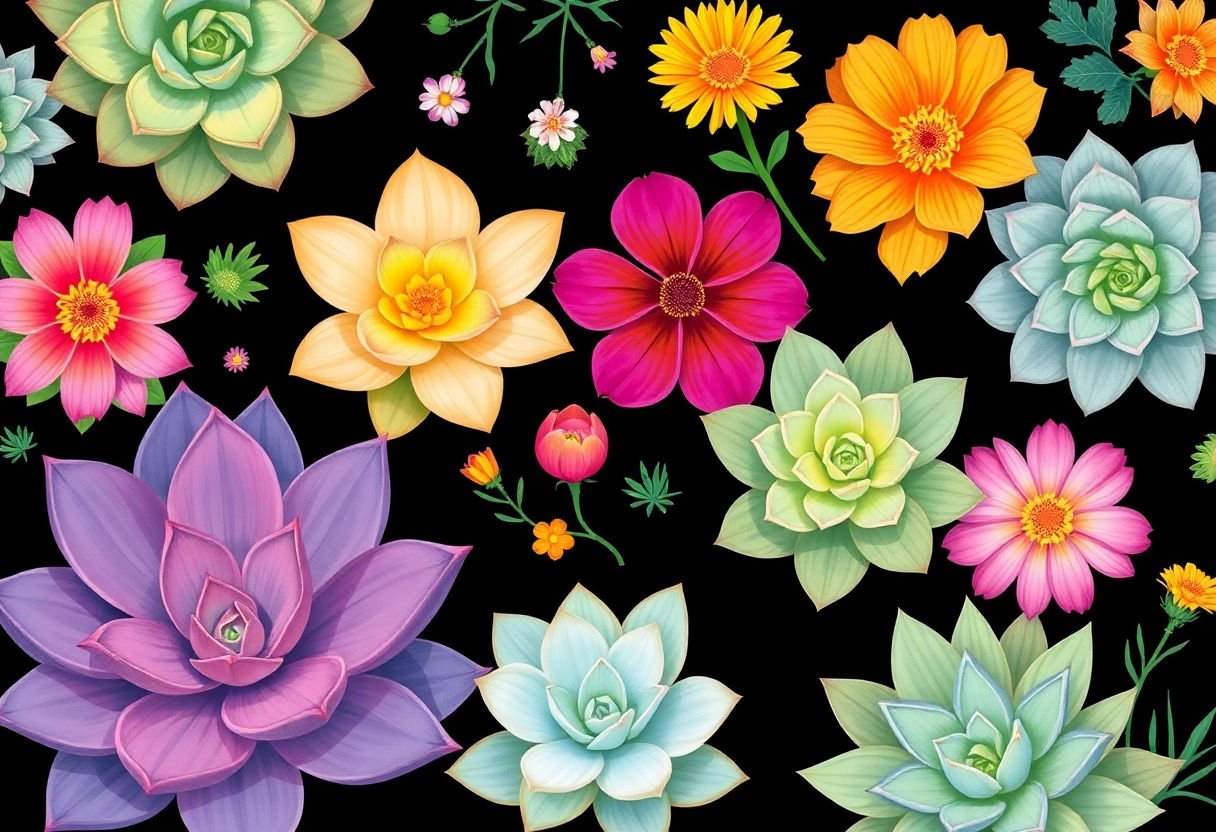
Succulents are not just about their juicy leaves. Some varieties are famous for their beautiful blooms. These plants surprise many with their bright and colorful flowers.
Echeveria, for instance, blooms with bell-shaped flowers in shades of orange or pink. Think of a delicate painting. These small flowers show the plant’s elegance.
Kalanchoe is another blossom lover. It often has clusters of tiny flowers, usually red, pink, yellow, or white. It’s like seeing a bouquet on each stem.
Then we have Aloe. Though many know it for its healing properties, people often overlook its flower spikes. Tall and majestic, these spikes are usually red or orange and stand out against the plant’s green leaves.
Cactus lovers might appreciate the beauty of the Prickly Pear. This spiky friend has yellow, red, or purple flowers. Imagine a desert sunset. That’s what its blooms might remind you of.
Each succulent has its unique bloom time. Some might flower in spring, while others save their beauty for summer. Remember, you must treat these plants well for them to flower. Bright light, a drop in temperature in winter, and the right amount of water help these plants to produce flowers.
These amazing succulents, with their fantastic blooms, transform any garden or room into a floral paradise. Their flowers are not just pretty but also show that these hardy plants have much more to offer.
Conclusion
Success with blooming succulents involves understanding their unique needs. Knowing the right conditions—light, water, temperature—lets them thrive. Each succulent, with its quirky traits, awaits the perfect moment to bloom. Challenges arise, but solutions exist. Embrace the science behind their flowering cycles. By doing so, gardeners can witness their plants in full bloom. This journey not only enhances landscapes but also deepens one’s appreciation of nature’s wonders. Keep nurturing these resilient plants and they will reward you with vibrant displays.
Frequently Asked Questions
What makes succulents bloom?
Succulents need the right conditions to bloom. They require bright light, proper watering, and the right temperature. Getting their care right invites blooms.
How do I encourage my succulents to flower?
Consistency in care helps. Provide them with enough light and let the soil dry between waterings. It’s like giving them the perfect balance of sun and shade.
Do all succulents bloom?
No, not all of them bloom regularly. Some are known for their vibrant flowers, while others flower less often. It depends on the variety and care.
Why is my succulent not flowering?
Lack of light or improper watering might be the cause. Check if they get enough sunlight and if the soil has the right moisture. Small changes can make a big difference.
How long do succulent flowers last?
Succulent blooms vary in lifespan. Some last a few days, while others can stay for weeks. The duration depends on the type of succulent and its environment.
